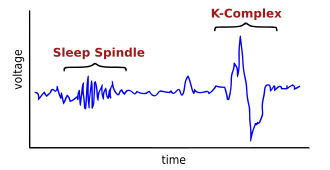Fecal incontinence is a lack of control over defecation, leading to involuntary loss of bowel contents, including gas.
Incontinence can result from different causes and might occur with either constipation or diarrhea. It is estimated that 2% to 10% of adults are affected, particularly women, often because of childbirth trauma to that area of the body, as well as the elderly, including about half of nursing home residents.
 Dr. Satish S.C. Rao providing TNT therapy for fecal incontinence
Dr. Satish S.C. Rao providing TNT therapy for fecal incontinence
There is often reduced self-esteem, shame, humiliation, depression, a need to organize life around easy access to a toilet and avoidance of enjoyable activities. fecal incontinence is an example of a stigmatized medical condition. People may be too embarrassed to seek medical help, and attempt to self-manage the symptom in secrecy from others.
Fecal incontinence management may be achieved through an individualized mix of dietary, pharmacologic, and surgical measures. The goals of treatment are to decrease the frequency and severity of episodes and improve quality of life.
The decision of which treatment to employ is based on the severity of symptoms and integrity of the anal sphincter.
Patients with more severe disease or sphincter defects will require more invasive procedures which can be categorized into methods that, repair, augment, replace or neuromodulate bowel function.
The mechanism of neuromodulation is still unclear. Indeed activation of a muscle is not the result of a simple volitional act that would result in activation of the muscle through an action potential sent to a chain of motor neurons. On contrary it is the result of a delicate balance and interactions between stimulating and inhibitory signals from different parts of the brain and the spine.
New paradigms of stimulation and new techniques have been developed. Furthermore, a large number of studies and clinical trials have demonstrated potential therapeutic applications of non-invasive brain stimulation, especially for TMS. Recent guidelines can be found in the literature covering specific aspects of non-invasive brain stimulation.
Translumbosacral neuromodulation therapy, or TNT, has shown early promise in strengthening connections between nerves and muscles that enable us to control stool release
"People have been applying brain (transcranial) magnetic stimulation to improve depression and nerve function, and we have demonstrated that patients with fecal incontinence have significant anal and rectal neuropathy," says Dr. Satish S.C. Rao. Dr Rao is director of neurogastroenterology/motility and the Digestive Health Clinical Research Center at MCG.
He is also project director and principal investigator on the new studies funded by a five-year, $4.2 million grant (R21DK104127-02) from the National Institute of Diabetes and Digestive and Kidney Diseases.
"We were therefore keen to study whether magnetic stimulation applied to the nerves in the back that control bowels would improve fecal incontinence," says Rao, who pioneered a special device and technology to enable these first in the world studies in fecal incontinence.
The investigators theorize and have evidence that magnetic stimulation, particularly at the higher dose of 3,600, helps correct what is wrong with the nerve-muscle connection.
The investigators will examine 88 patients again at 12, 24 and 48 weeks and assess whether the actual treatment, rather than the placebo or sham, improves leakage.
Dr Rao and his colleagues are giving the painless TNT sessions once a week over six weeks to 88 patients at a dose of either 2,400 or 3,600 magnetic stimulations at 1 hertz and performing the lookalike sham on 44 others.
While many therapies have focused on strengthening muscles, or surgically repairing torn muscles, Rao has increasing evidence that for many a major problem is that the nerves which control the muscle have been damaged, and this nerve injury, or neuropathy, is a significant factor in fecal incontinence. Rao uses the analogy of a malfunctioning lightbulb: Replacing the bulb is not helpful if it is an electrical problem.
Part of the problem has been lack of an easily usable, accurate and objective method to assess and/or improve nerve function, Rao says. For example, one technique requires putting a needle in the anal muscle.
Rao first developed a comparatively benign yet comprehensive method with a probe in the rectum and an external coil placed on the back to deliver magnetic stimulations to related nerves and watch the response. His team found that 70-80% of patients with fecal incontinence had anal or rectal neuropathy using this novel test, called the translumbosacral anorectal magnetic stimulation test, or TAMS, pioneered in his lab.
Finding that nerve function was definitely an issue, Rao and his team then decided to apply the external magnet on relevant nerves in the back area as a potential treatment. They looked at different frequencies, knowing that higher frequencies worked better on the brain, but found the low frequency 1 hertz worked best on these nerves with about 90% of the first patients experiencing improvement. While these patients were not asked to do exercises to strengthen anal muscles, they also experienced an improvement in muscle function and sensory awareness for stooling.
The $18.8 million five-year study, also funded by the National Institutes of Health's NIDDK, also is underway at MCG and AU Health as well as three other sites nationally that are referral centers for fecal incontinence.
Advertisement

This book retraces the main achievements of ALS research over the last 30 years, presents the drugs under clinical trial, as well as ongoing research on future treatments likely to be able stop the disease in a few years and to provide a complete cure in a decade or two.

 Copper(II) hydroxide, source: Vano3333 via Wikipedia
Copper(II) hydroxide, source: Vano3333 via Wikipedia




 Dr. Satish S.C. Rao providing TNT therapy for fecal incontinence
Dr. Satish S.C. Rao providing TNT therapy for fecal incontinence